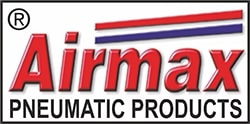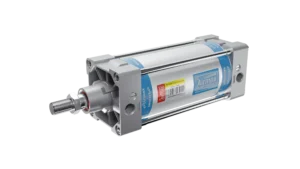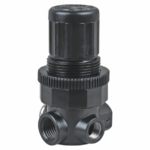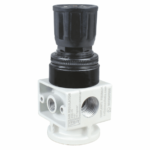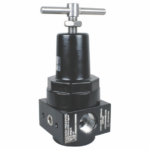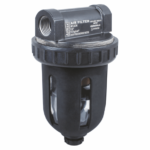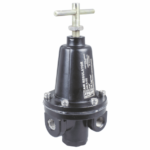How Temperature Affects Pneumatic Cylinders: From -20˚C to 80˚C
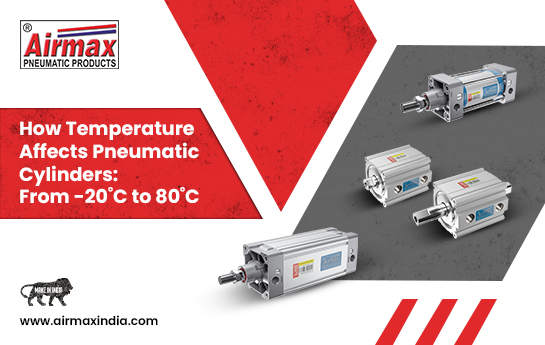
Pneumatic cylinders are broadly used in industrial automation, manufacturing, and processing industries due to their performance, reliability, and simplicity of operation. However, temperature variations from severe bloodless (-20˚C) to excessive heat (80˚C) can significantly affect their overall performance, lifespan, and efficiency. Understanding how temperature impacts pneumatic cylinder is critical for optimizing operations and deciding on the proper additives.
This article explores the effects of both low and excessive temperatures on pneumatic cylinders, including fabric contraction, lubrication-demanding situations, seal degradation, and normal system efficiency. It additionally provides sensible answers for temperature management and highlights the pleasant products from Airmax Pneumatics Ltd, a leading pneumatic cylinder manufacturer in India.
Effects of Low Temperatures (-20˚C and Below)
Material Contraction and Brittle Seals:
At extremely low temperatures, materials inclusive of rubber, polyurethane, and even some metals settlement, main to:
- Increased stiffness in seals and gaskets.
- Reduced flexibility, growing the threat of seal breakage and air leakage.
- Potential cylinder malfunction because of internal brittleness.
To ensure optimal performance, it is also essential to correctly determine the stroke length of a pneumatic cylinder based on application requirements. Learn how to calculate it with our Step-by-Step Guide.
Increased Friction and Lubrication Challenges:
Cold temperatures affect the viscosity of lubricants utilized in pneumatic cylinders, inflicting:
- Thickening of lubricants, lowering clean movement.
- Increased friction among cylinder components, leading to wear and tear.
- Possible freezing of moisture within the cylinder, inflicting blockages.
Condensation and Moisture Accumulation:
When air enters the pneumatic device, temperature fluctuations can also result in:
- Water condensation in the cylinder, doubtlessly freezing and obstructing movement.
- Corrosion and degradation of inner parts through the years.
Solutions for Low-Temperature Applications:
- Use low-temperature-resistant seals, together with silicone or fluorocarbon-based total substances.
- Apply specialized lubricants designed for bloodless environments.
- Install air dryers or moisture traps to save you from condensation.
- Select cylinders with stainless steel or anodized aluminum additives for better sturdiness.
Effects of High Temperatures (Above 80˚C)
Seal Degradation and Leakage:
Heat can cause excessive growth of cylinder components, mainly due to:
- Deformation of rubber seals, inflicting loss of hermetic integrity.
- Increased risk of internal leakage, decreasing performance.
- Accelerated growing of substances due to extended exposure to heat.
To maintain efficiency in pneumatic systems, it is equally important to know how to calculate pneumatic cylinder force for optimal performance. Check out our detailed checklist to ensure accurate calculations.
Lubrication Breakdown:
Extreme warmth can affect lubricants through:
- Reducing viscosity, mainly due to insufficient lubrication.
- Increasing wear and tear on piston rods and cylinder walls.
- Causing carbon buildup, which obstructs clean operation.
Reduced Cylinder Lifespan:
Prolonged exposure to excessive temperatures can:
- Accelerate cloth fatigue and deterioration.
- Affect the pliability of seals, leading to common replacements.
- Compromise the performance of pneumatic structures, leading to expanded maintenance prices.
Solutions for High-Temperature Applications:
- Use warmness-resistant seals, inclusive of PTFE (Teflon) or Viton.
- Apply excessive-temperature lubricants with solid viscosity.
- opt for heat-treated or covered cylinder substances for stronger thermal resistance.
- Implement cooling structures or insulation to modify the temperature.
Best Practices for Temperature Management in Pneumatic Cylinders
- Select the Right Cylinder Material: Stainless steel or anodized aluminum cylinders provide better resistance to extreme temperatures compared to conventional metal.
- Use Temperature-Specific Seals: Choosing an appropriate seal cloth guarantees toughness and prevents leakage.
- Regular Maintenance: Periodic inspection, lubrication, and cleaning prevent breakdowns resulting from severe temperatures.
- Optimize Air Preparation: Incorporating air dryers, filters, and regulators complements the performance of pneumatic cylinders in various situations.
- Monitor Operating Environment: Using temperature sensors and monitoring structures allows locating troubles earlier than they strengthen.
Additionally, understanding how to measure pneumatic cylinder bore size is crucial for selecting the right components for different temperature conditions. Follow our guide to ensure precision in your pneumatic system setup.
Airmax Pneumatics Ltd: Your Trusted Pneumatic Cylinder Manufacturer
When managing high temperature variations, selecting extremely good pneumatic additives is vital. Airmax Pneumatics Ltd, a leading pneumatic cylinder manufacturer in India, offers durable and dependable solutions for numerous commercial applications. Whether you want pneumatic valves, pneumatic actuators, or high-performance cylinders, Airmax Pneumatics Ltd guarantees the most excellent performance, even in harsh environments.
Explore our extensive variety of VNC Model Pneumatic Cylinder and ANC Model Pneumatic Cylinder, designed for advanced overall performance under varying temperature conditions. Visit our website to analyze extra approximately our modern pneumatic answers and how we allow you to beautify your commercial operations.
By knowing how temperature affects pneumatic cylinders, industries can make certain of higher overall performance, durability, and efficiency. Choosing the right additives, together with those provided utilizing Airmax Pneumatics Ltd, ensures reliability even in excessive working situations. Optimize your pneumatic structures these days with professional steerage and notable merchandise!
